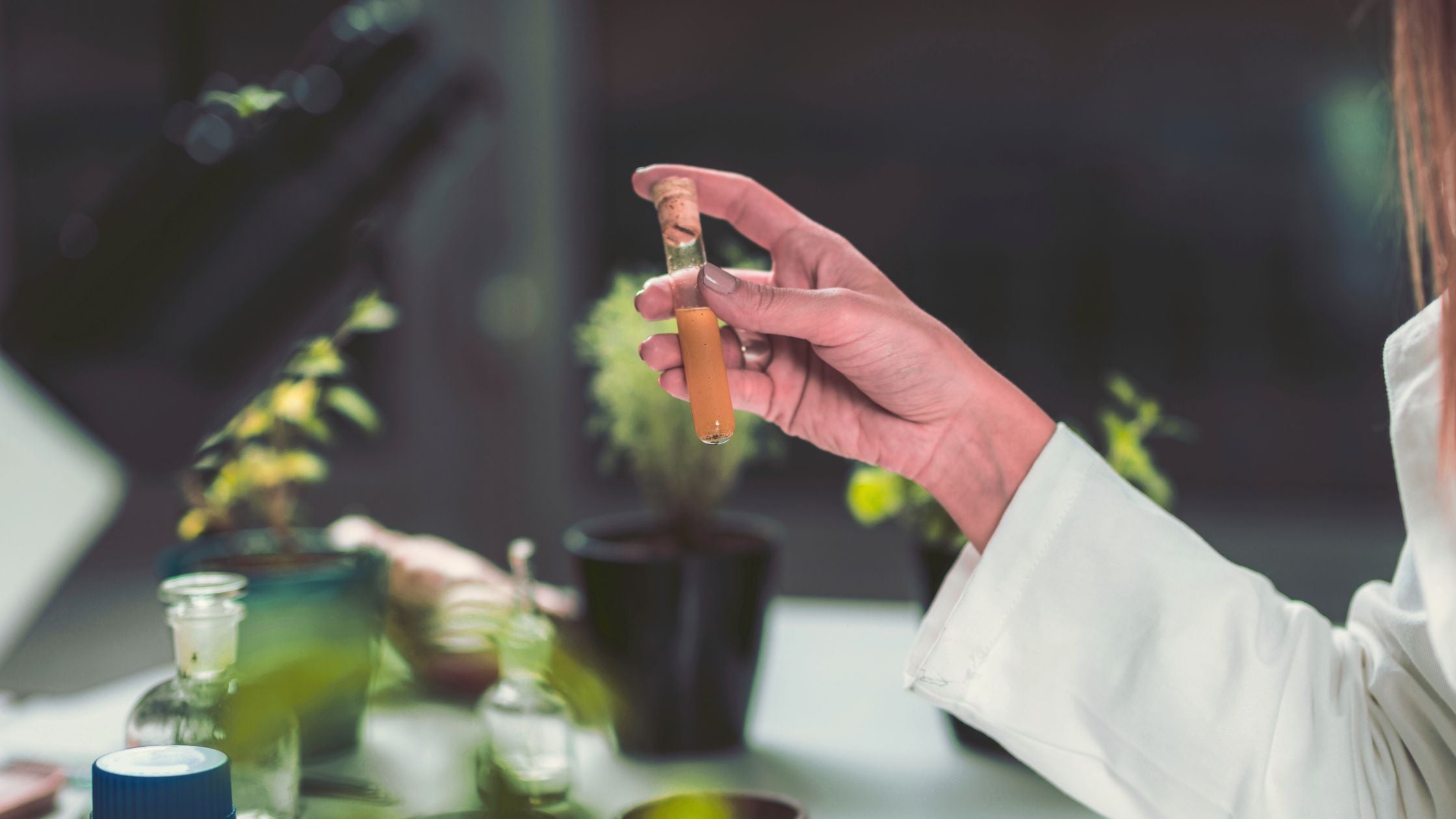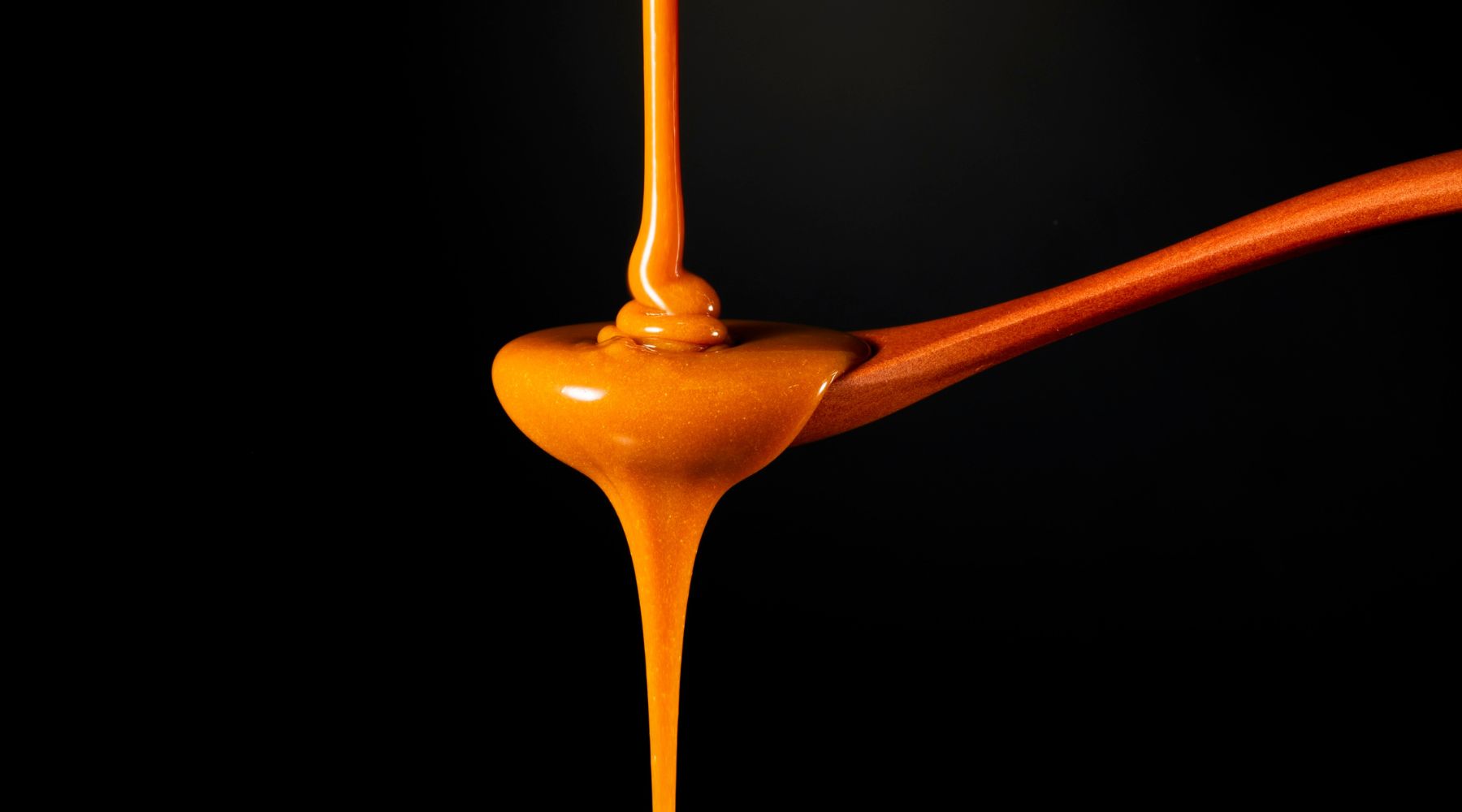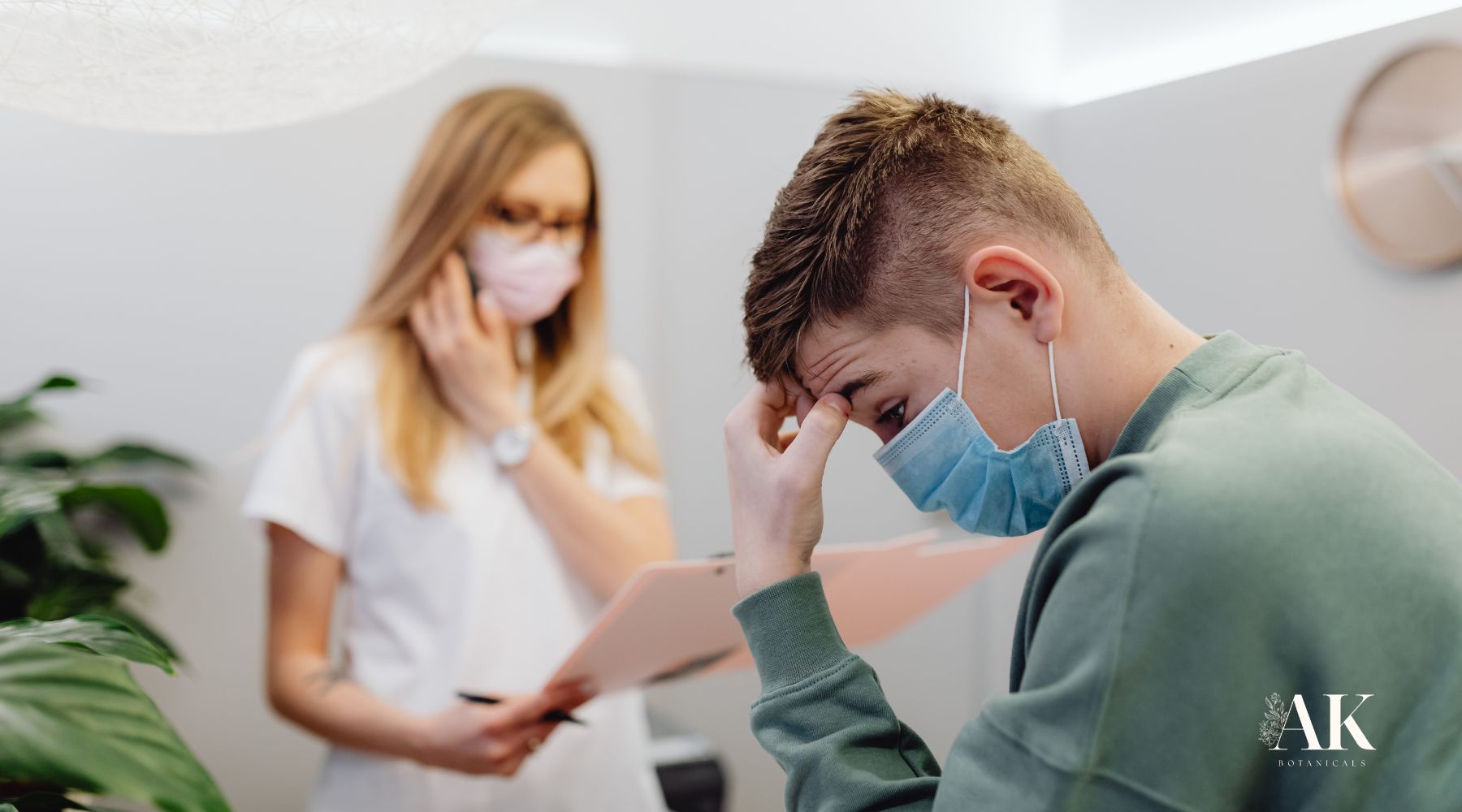
Natural Over-the-Counter Solutions That Support Skin Affected by Sun Damage and Precancerous Spots
Actinic keratosis (AK) can be frustrating, even alarming. These dry, scaly, or crusty patches of skin—most commonly appearing on sun-exposed areas like the face, scalp, neck, and hands—are not just a cosmetic concern.
Actinic keratoses are considered precancerous and have the potential to progress into squamous cell carcinoma if left untreated. However, that doesn’t mean aggressive, costly, or painful treatments are always the first or only line of defense.
For many people, especially those with mild to moderate AK or who are newly diagnosed, natural alternatives may help support skin affected by sun damage, and support overall skin health—without the discomfort or downtime associated with more invasive options.
An increasing number of patients and consumers are exploring over-the-counter, home-based topical remedies that align with broader trends in wellness, skin minimalism, and preventive care.
But before we take a look at the most effective natural ingredients for managing AK at home, let’s take a closer look at the types of people who opt for this route, the pros and cons of at-home treatment, the healthcare system barriers that often make it the only realistic option for many to treat aks, and why natural remedies are gaining ground in dermatological care.
Why More People Are Turning to At-Home, Natural Skin Solutions
The rise in interest around home remedies for actinic keratosis isn’t just anecdotal—it reflects several important shifts in both healthcare accessibility and consumer behavior.
1. Healthcare Access and Dermatology Wait lists
For many patients, especially those in rural or underserved urban areas, seeing a dermatologist isn't easy. According to a 2018 study published in the Journal of the American Academy of Dermatology, the average wait time to see a dermatologist in the U.S. can range from 30 to 100+ days.
In countries with universal healthcare systems, delays can be even longer due to backlog and resource limitations.
Even getting a referral from a general practitioner can be a multi-week process, and for those without insurance, the cost of a private dermatologist appointment—ranging from $150 to $300+ just for a consultation—can be prohibitive.
In many cases, people delay care or seek alternatives not because they don’t value expert advice, but because they simply can’t access it in a reasonable time frame.
2. High Cost of Treatment
Dermatologist-recommended treatments for actinic keratosis include cryotherapy (freezing lesions with liquid nitrogen), photodynamic therapy, laser resurfacing, and prescription topicals like diclofenac sodium gel, fluorouracil, or imiquimod.
While these are clinically effective, they’re often associated with uncomfortable side effects—burning, redness, swelling, crusting—and come with a high price tag, especially when repeat treatments are required.
Cryotherapy or laser therapy can cost anywhere from $500 to $3,000 per session depending on lesion quantity and clinic location.
Even topical treatments like diclofenac gel (brand name Solaraze) can cost over $100 per tube without insurance.
3. Time Commitment and Downtime
Prescription topical regimens for actinic keratosis can take 4–8 weeks to complete and often lead to inflammation, flaking, and even open sores. For people working public-facing jobs or concerned about their appearance during treatment, this becomes a major deterrent.
Many natural or home-based topical alternatives are more discreet and cause minimal irritation, making them a preferable daily ritual for long-term skin care.
4. The Natural Health Movement
Today’s consumers want to know what they’re putting on their skin. Many seek clean, plant-based skincare that avoids synthetic chemicals, aligns with their eco-conscious values, and fits within broader wellness goals.
In response, the natural and organic skincare industry is projected to surpass $22 billion globally by 2027. This shift has given rise to innovative products and remedies derived from botanicals like tea tree oil, green tea extract, and kanuka honey, many of which have demonstrated skin-healing properties. Not to mention AKti-Clear, our leading solution for managing actinic keratosis.
Who Chooses At-Home Topical Natural Remedies for Actinic Keratosis?
While natural remedies aren't a one-size-fits-all replacement for clinical care, they serve a growing demographic. People most likely to explore at-home care for actinic keratosis include:
- Adults 45 and older with fair skin: Especially those with a history of sunburns or outdoor exposure.
- Men who work outdoors or play sports in the sun: Think roofers, farmers, golfers, and surfers.
- Holistic health enthusiasts: People already interested in clean beauty, essential oils, and non-toxic living.
- The uninsured or underinsured: Individuals avoiding the high cost or complexity of seeing a dermatologist.
- Those who've already undergone aggressive treatments: Looking to prevent recurrence or manage new lesions.
The Pros and Cons of At-Home Care for AK
Pros
Affordability: Natural remedies typically cost far less than prescription creams or in-office procedures.
Accessibility: Available over-the-counter and online, no prescription or referral needed.
Skin-Friendly: Lower risk of harsh side effects like crusting or chemical burns.
Empowerment: Daily care routines offer a sense of control and attentiveness to skin changes.
Cons
Need for Patience: Natural treatments often require patience—visible improvement can take weeks or months.
Results may Vary: Results vary based on individual skin type, severity of lesions, and treatment consistency.
Potential for Misdiagnosis: Without a dermatologist’s input, there’s a risk of mistaking more serious conditions like basal cell or squamous cell carcinoma for benign AK.
The Best Natural Over-the-Counter Solutions for Actinic Keratosis
These over-the-counter natural options are widely available and commonly used by those managing AK at home.
1. AKti-Clear – A Targeted Solution
AKti-Clear AKti-Clear is formulated to support skin affected by actinic keratosis using botanically infused ingredients. Our natural formula blends bloodroot extract with soothing botanicals and antioxidants to promote skin turnover, reduce irritation, and target AK at its root. It’s especially helpful for those looking for a focused solution beyond generic oils or creams.
Bloodroot, a plant known for its strong escharotic effects, is thought to aid in the exfoliation of abnormal skin cells. While it should be used cautiously, its inclusion in a professionally blended product like AKti-Clear makes it safer than DIY versions.
2. Green Tea Extract
Green tea is packed with EGCG, a polyphenol known to inhibit precancerous cell growth. Creams with green tea extract or compresses made with cooled brewed tea may help support skin appearance and calm irritation.
A study published in the National Library of Medicine (PMC6000848) found that topical green tea preparations can reduce the number of AK lesions over time.
3. Apple Cider Vinegar (ACV)
With natural acidity that aids exfoliation, ACV commonly used to support exfoliation in natural skincare routines. Always dilute before applying and patch-test to avoid irritation. Use a cotton ball to dab a solution of 1 part vinegar to 3 parts water onto affected areas once daily.
4. Tea Tree Oil
This essential oil is known for its antiseptic and anti-inflammatory qualities. commonly used to calm skin and reduce visible irritation. Always mix with a carrier oil like coconut or olive oil—undiluted tea tree oil can irritate sensitive skin. Apply 1–2 times daily.
5. Vitamin E Oil
Vitamin E enhances cellular repair and moisturizes damaged skin. It may also prevent scarring after lesion resolution. Pierce a capsule or use bottled oil and apply to dry, scaly areas nightly.
6. Aloe Vera
Soothing, anti-inflammatory, and hydrating, aloe vera is ideal for daily use. Apply the gel (ideally from a fresh leaf or 99% pure product) to clean skin once or twice per day. It may help reduce irritation and support healthy skin regeneration.
7. Coconut Oil
This natural hydrator reduces itching, calms redness, and keeps skin supple. While not a curative treatment for actinic keratosis, coconut oil helps maintain skin health and enhances the absorption of other active ingredients when used as a base layer.
8. Honey (Especially Kanuka or Manuka)
Raw honey, especially kanuka honey, has antimicrobial and wound-healing properties. Applied as a mask or spot treatment, it can soothe lesions and gently exfoliate. Kanuka honey is similar to Manuka but comes from a different New Zealand shrub; both are gaining popularity for dermatological use due to their anti-inflammatory and antibacterial nature.
What to Expect from Natural AK Treatments
Time Frame
Natural products usually require consistent application for 2 to 12 weeks before significant changes are visible. They’re not a quick fix but can be part of a long-term skin health strategy. AKti-Clear requires 3 days for application and about 15 days for full recovery.
Cost Range
Most remedies range from $5–$40, with AKti-Clear priced around $64. Compared to thousands in clinical treatment costs, the price of natural remedies is often what draws people to explore them first.
Signs to Watch For
While addressing actinic keratosis naturally, keep an eye on your lesions. If any spot begins to bleed, grow rapidly, become painful, or change shape/color, seek professional evaluation immediately. Although rare, untreated AK can progress to squamous cell carcinoma or be confused with more serious skin cancers like basal cell carcinoma.
Actinic keratoses don’t always require drastic medical intervention. For those with early-stage lesions, minimal access to healthcare, or a preference for gentler options, natural, home-based topical solutions offer a valuable alternative. They empower individuals to care for their skin daily and may prevent the progression of AK when used consistently and mindfully.
While options like AKti-Clear, tea tree oil, or kanuka honey can be useful, no solution—natural or otherwise—should replace medical judgment. When in doubt, consult a professional, but don’t underestimate the power of nature to support your skin’s healing journey.




